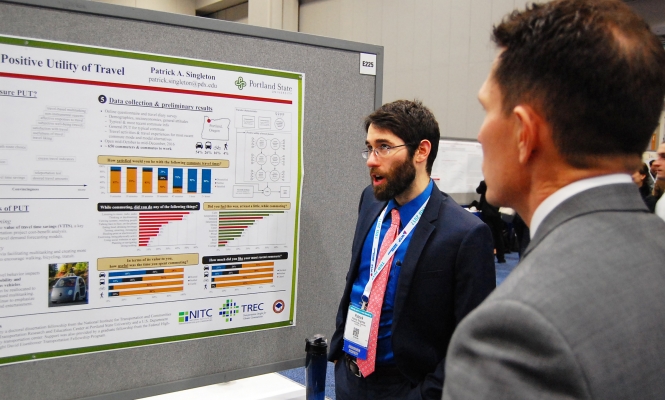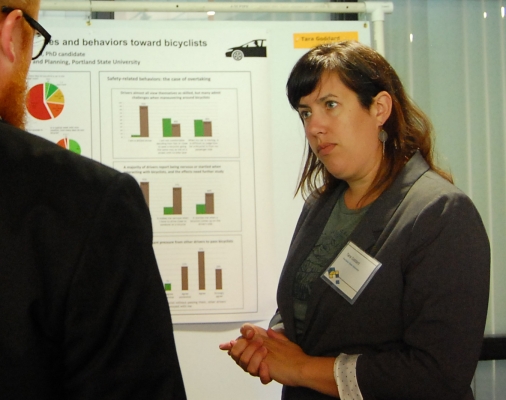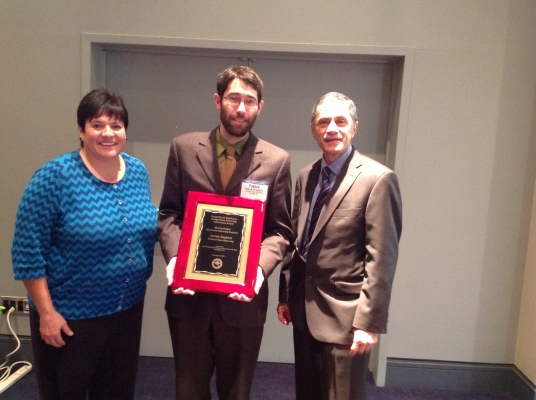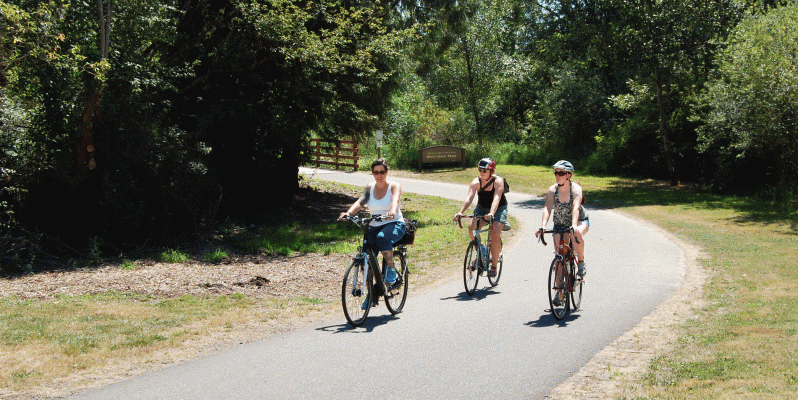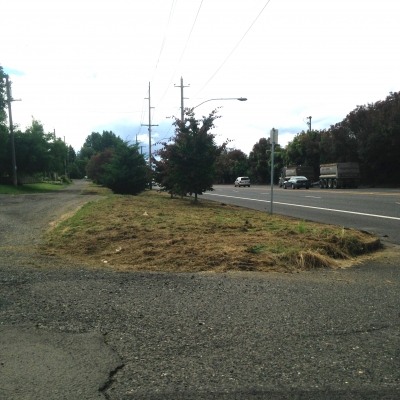Portland State doctoral student Patrick Singleton won the best presentation award for the Doctoral Research in Transport Modeling and Traveler Behavior session of the Transportation Research Board annual meeting in Washington, D.C. This marks the second year running that a Portland State student has won the award, after Steven Gehrke won in 2016.
Singleton presented “Exploring the Positive Utility of Travel and Mode Choice,” drawn from his dissertation research. Positive utility of travel is a concept that travel can provide benefits and be motivated by factors beyond reaching a destination.
The award will be formally presented during the Network Modeling Committee meeting at next year’s Transportation Research Board conference.
Singleton continues to rack up awards. He has been named the NITC university transportation center student of the year and has received Eno and Eisenhower fellowships, being named the top-ranked Eisenhower recipient at the 2015 TRB annual meeting. He was also named a NITC dissertation fellow in 2016.
He is a doctoral student in the Civil and Environmental Engineering department and is involved in several TREC research projects. His adviser is Prof....
Read more of our TRB 2017 coverage here.
Tara Goddard, a doctoral candidate in the Nohad A. Toulan School of Urban Studies and Planning at Portland State University, has been selected as the 2016 NITC university transportation center student of the year.
NITC takes pride in the development of tomorrow’s transportation leaders, involving students in research and supporting student transportation groups.
Goddard is the 11th student of the year since Portland State established its university transportation center in 2006. She is being recognized at the Council of University Transportation Centers 2017 Annual Awards Banquet in Washington, D.C., where she's also attending the Transportation Research Board annual meeting.
Goddard’s dissertation research explores drivers’ attitudes and behaviors toward bicyclists. This reflects her broader interest in the intersectionality between transportation and the social sciences, and how professionals in both disciplines can work together to improve upon public spaces and the ways that people interact within them.
This research focus comes with exciting opportunities for future work, a future which is still being determined: Goddard has applied for academic positions in different parts of the world and is waiting to...
Read moreThe latest report released by NITC offers a unique tool for communities: a guide to broadening residents’ knowledge about their transportation system and how to effect the changes they want to see.
Community involvement and outreach is an important part of any planning effort, but as planners often find, many times the conversation is a difficult one to carry on. Residents may lack the technical knowledge to understand the intricacies of the system, or they may show skepticism toward the planning process in general.
“Transportation Leadership Education,” a project by Portland State University research associate Nathan McNeil, offers a startup kit for communities to stimulate the development of a more involved, educated citizenry.
“One of the conventions has been that public involvement is based around a specific plan or a specific project. This approach is more proactive; it recognizes the value in having informed citizens... building up the civic infrastructure of people, knowledge and connections,” McNeil said.
For the past 24 years, the City of Portland and Portland State University have teamed up to offer a ten-week transportation education course, free of charge to community members.
The Portland Traffic and Transportation Course,...
Read moreA NITC research project from Portland State University introduces a method of cleaning up land use data, for use in improved transportation models.
Transportation and land use are closely interdependent. Considerable work is underway, in Oregon and elsewhere, to develop models that integrate the two.
Planners creating these models often spend the bulk of their time preparing data on the various land uses. Many times the data, gathered from diverse sources, is incomplete and requires the planner to find missing information to fill in the gaps.
In fields outside of transportation, there have been considerable advances in techniques to do this. Data-mining and machine-learning techniques have been developed, for example, to systematically detect fraud in credit data, reconcile medical records and clean up information on the web.
In the transportation modeling community, by contrast, most efforts to tackle the problem are tied to a specific model system and a chosen study area. Few have produced reusable tools for processing land use data.
Liming Wang, lead investigator of the project Continuous Data Integration for Land Use and Transportation Planning and Modeling, offers such reusable...
Read moreA project led by Portland State University researchers Chris Monsere and Miguel Figliozzi has been nationally recognized as one of sixteen high value research projects by the American Association of State Highway and Transportation Officials (AASHTO).
Each year at its annual meeting, AASHTO's Research Advisory Committee selects four projects from each of its four regions to form a "Sweet Sixteen" group of important and influential projects.
The project, “Operational Guidance for Bicycle-Specific Traffic Signals,” reviewed the current state of practice for bicycle signals and evaluated cyclist performance characteristics at intersections. The research has been used to inform an FHWA Interim Approval for bicycle signals.
Bike signals are beginning to be common in major cities throughout the U.S., with some engineering guidance available from the California Manual on Uniform Traffic Control Devices, the...
Read moreIn a morning workshop on Sunday at TRB's annual meeting, Patrick Singleton of Portland State University was named the top-ranked Eisenhower Fellowship recipient
The session featured innovative research from second- and third-year Eisenhower doctoral fellowship recipients from top universities across the nation.
Singleton was one of four civil and environmental engineering students from PSU to be awarded the Dwight David Eisenhower Transportation Fellowship in 2014.
The paper he presented, "The theory of travel decision-making: A conceptual framework of active travel behavior," integrates theories from economics, geography and psychology to arrive at a unifying framework for understanding and predicting active travel decisions.
It examines the thought processes behind individuals' short-term travel decisions and explains the roles of activities, built environment factors, socio-demographics, perceptions, and habit in influencing those decisions.
Singleton's award marks the second year in a row that a Portland State student has taken the top honor, following Kristina Currans.
Singleton's adviser, Prof. Kelly Clifton, said she's proud of his accomplishment and the continued achievement of Portland State students. "It shows the strength of the program," Clifton said.
... Read moreThree students at NITC member universities have been awarded scholarships from the Portland, Oregon chapter of WTS.
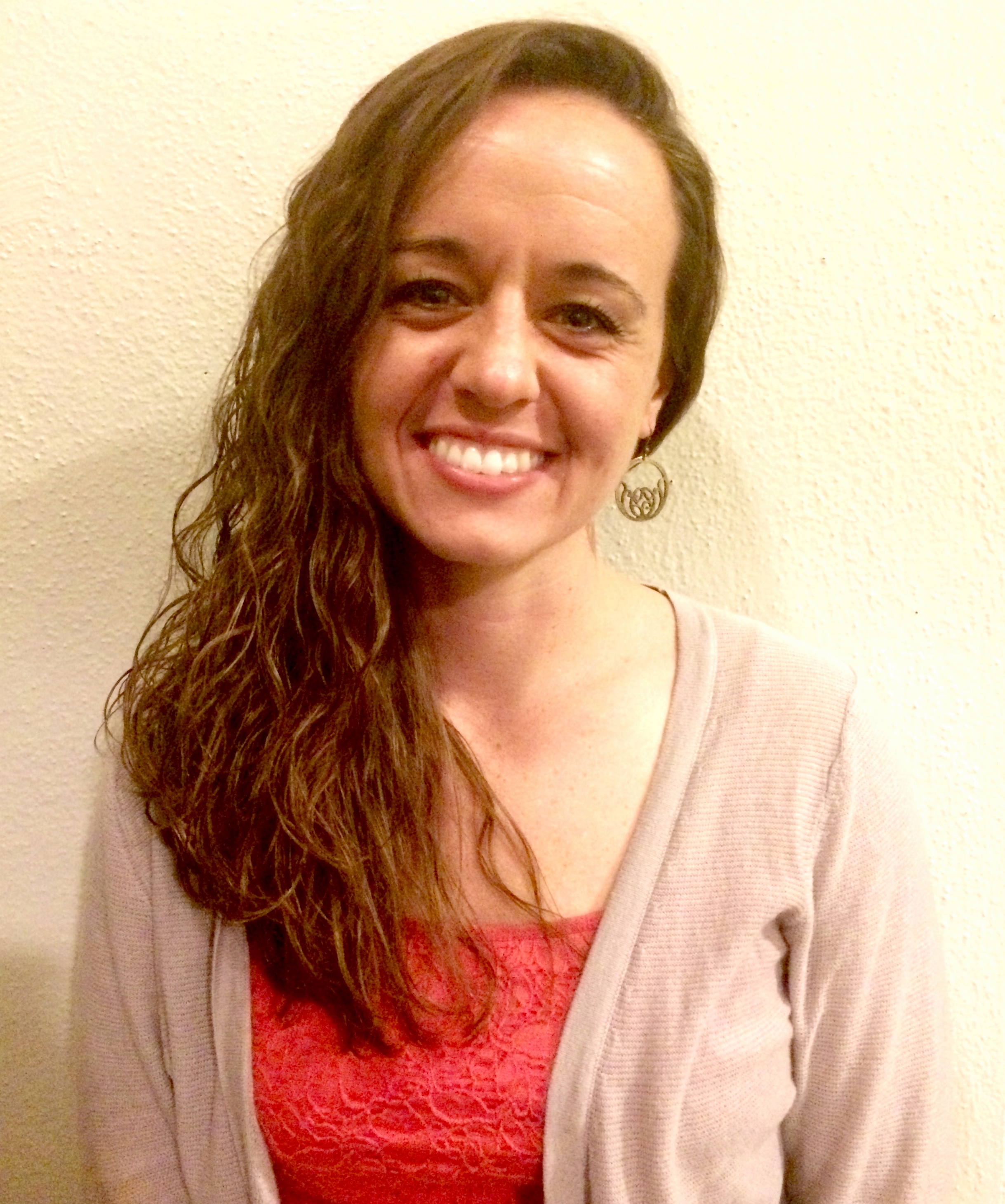 Miranda Barrus, a civil engineering student at the Oregon Institute of Technology, is the 2014 recipient of the Sharon D. Banks Undergraduate Scholarship. The scholarship honors Sharon D. Banks, chief executive officer of AC Transit in Alameda-Contra Costa County, California, who led the agency in a pioneering effort to introduce cultural and organizational changes aimed at motivating the public transit work force.
Miranda Barrus, a civil engineering student at the Oregon Institute of Technology, is the 2014 recipient of the Sharon D. Banks Undergraduate Scholarship. The scholarship honors Sharon D. Banks, chief executive officer of AC Transit in Alameda-Contra Costa County, California, who led the agency in a pioneering effort to introduce cultural and organizational changes aimed at motivating the public transit work force.
Barrus serves as vice president of Oregon Tech’s student chapter of ITE, the Institute of Transportation Engineers. She also won a scholarship for the 2014-2015 school year from the Structural Engineers Association of Oregon Scholarship Foundation. She was selected for her leadership, participation in activities, and outstanding performance in engineering.
...
Read moreThe Initiative for Bicycle and Pedestrian Innovation (IBPI) is teaming up with Alta Planning + Design to offer a firsthand, on-the-ground training opportunity at the end of October.
They will teach a trail design course at Portland State University, with field tours of some of Portland's biggest trail challenges and best solutions.
Course instructors are Alta associates Robin Wilcox, George Hudson, and Karen Vitkay. They will share their experience and provide examples from some of the best trails around the country.
Multi-use trails, not accessible by car but meant to be shared by pedestrians, cyclists and the occasional leashed dog, are pleasant routes by almost anyone’s standards. Often winding through wooded areas or along waterways, insulated from the noise of traffic and offering contact with nature, they present an attractive alternative to cyclists who are not as comfortable riding on busy streets.
While any segment of trail can offer a pleasant stroll, the true beauty of shared-use trails lies in being able to use them: as an alternate, off-street means of travel, a route to school or a way to get to work in the morning. A widespread switch from driving on streets to...
Read moreIn 2009, researchers at the Massachusetts Institute of Technology (MIT) developed the Copenhagen Wheel, a device that converts an ordinary bicycle into a hybrid e-bike.
An e-bike is considered a motorized bicycle under Massachusetts law. This means that once the 13-pound, 26-inch Copenhagen Wheel is attached to the rear wheel of a bicycle, the resulting vehicle requires a driver’s license to operate, must be registered with the DMV, and its rider must wear, not just a bike helmet, but a motorcycle helmet to be in compliance with the law.
Electric bicycles, or e-bikes, are well established in China and other Asian and European countries but market adoption has been slow in the United States.
Part of the reason could be that the law is often nebulous where e-bikes are concerned.
NITC researchers at Portland State University conducted a policy review revealing the current state of legislation regarding e-bikes in the United States and Canada.
The report, Regulations of E-Bikes in North America, provides a summary of legal definitions and requirements surrounding the use of electric-assist bicycles in each of the 50 states, Washington D.C. and 13 Canadian provinces.
No two jurisdictions are exactly alike in their legal treatment of this relatively new mode...
Read moreThree Portland State University graduate students in the Nohad A. Toulan School of Urban Studies and Planning used GIS technology to collect and analyze residents’ thoughts about walkability needs for Portland, Oregon’s northeast Cully neighborhood.
In PPGIS, community input is used to create GIS-based data and diagnostics maps which can inform planners’ decision-making process. Team members Travis Driessen, Brandi Campbell and Eduardo Montejo worked with community-based organizations and residents to assess the needs of the Cully neighborhood’s pedestrian network using PPGIS methods.
Prior to this project, Driessen, who is working toward a graduate certificate in Geographic Information Systems at PSU, was already collaborating with David Hampsten, a board member of the Hazelwood Neighborhood Association and member of the East Portland Action Plan, to help Prioritize Portland! – a coalition consisting of multiple organizations including the ...
Read more
